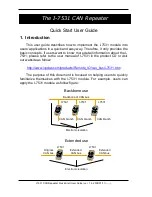
Oval 80
v.2
and Sentinel
v.2
Radiant Tube Heaters
Owner’s Manual • Oval 80
v.2
and Sentinel
v.2
11
-- Regulators mounted outside must be protected from
adverse weather conditions.
-- Regulators with pressure relief valves should be
installed outside the building.
-- Regulators installed inside should be vented outside.
-- Local state and national codes apply to regulator in-
stallation. Refer to NFPA 54, National Fuel Gas Code,
and NFPA 58, Standard for Storage and Handling of
Liqui
fi
ed Petroleum Gas.
8. Always use pipe joint compound that is resistant to
lique
fi
ed petroleum gas and natural gas.
9. Check all connections for gas leaks using approved
gas leak detectors. Gas leak testing is performed as
follows:
-- Check all pipe connections, hose connections,
fi
ttings
and adapters upstream of the gas control with ap-
proved gas leak detectors.
-- In the event a gas leak is detected, check the compo-
nents involved for cleanliness and proper application of
pipe compound before further tightening.
-- Tighten the gas connections as necessary to stop the
leak.
-- After all connections are checked and any leaks are
stopped, turn on the main burner.
-- Stand clear while the main burner ignites to prevent
injury caused from hidden leaks that could cause
fl
ashback.
-- With the main burner in operation, check all connec-
tions, hose connections,
fi
ttings and joints as well as
the gas control valve inlet and outlet
-- If a leak is detected, check the components involved
for cleanliness in the thread areas and proper applica-
tion of pipe compound before further tightening.
WARNING
Fire and Explosion Hazard
■
Do not use open
fl
ame (matches, torches,
candles, etc.) in checking for gas leaks.
■
Use only approved leak detectors.
■
Failure to follow this warning can lead to
fi
res
or explosions.
■
Fires or explosions can lead to property
damage, injury or death.
-- Tighten the gas connection as necessary to stop the
leak.
-- If necessary, replace the parts or components involved
if the leak cannot be stopped.
-- Ensure all gas leaks have been identi
fi
ed and repaired
before proceeding.
10. Install a sediment trap at the gas valve inlet to prevent
foreign materials (pipe compound, pipe chips and
scale) from entering the gas valve. Debris blown into
the gas valve may cause that valve to malfunction
resulting in a serious gas leak that could result in a
possible
fi
re or explosion causing loss of products,
building or even life. A properly installed sediment trap
will keep foreign materials from entering the gas valve
and protect the safe functioning of that important safety
component.
11. Any heater connected to a piping system must have an
accessible, approved manual shut off valve installed
within six feet (6 ft.) of the heater it serves.
12. Install the proper size of gas supply line to assure
proper functioning of the heaters. Consult your fuel
gas supplier, or the L.B. White Co., Inc. for proper line
sizing and installation.
13. Light according to instructions on heater or within
Owner’s Manual.
14. The heater is designed for L.P. vapor withdrawal or
natural gas only. Do not use this heater in a propane
liquid withdrawal system. Do not permit propane in
liquid form to enter the heater.
15. The corrosive atmosphere present in animal con
fi
ne-
ment buildings can cause component failure or heater
malfunction. The heater should be periodically inspect-
ed and cleaned in accordance with the Maintenance
and Cleaning Instructions in this manual. Make sure
that livestock is protected by a back up alarm system
that limits high and low temperatures and also activates
appropriate alarms.
16. Take time to understand how to operate and maintain
the heater using the owner’s manual. Make sure you
know how to shut off the gas supply to the building and
to the heater. Contact your gas supplier if you have any
questions.
17. Any defects found in performing any of the service
procedures must be eliminated and defective parts
replaced immediately. Retest the heater before placing
it back into service.












































